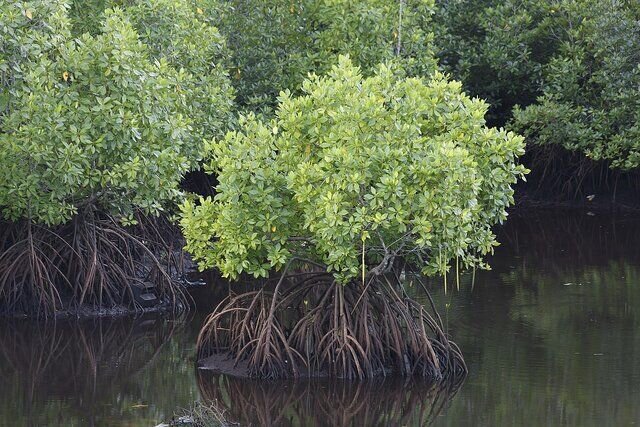Mangrove forests expanded by 267 hectares in a year

TEHRAN – In the past Iranian calendar year that ended on March 19, mangrove forests in the southern parts of the country were expanded by 267 hectares, an official with the Department of Environment has said.
Some 300,000 saplings of mangrove trees were planted in the main habitats of Bushehr, Sistan-Baluchestan, and Khuzestan provinces, Mohamad Talebi-Matin told IRNA.
Iran ranks first among the seven littoral countries of the Persian Gulf and Sea of Oman, accounting for some 22,000 hectares of the total 30,000 hectares area of mangrove forests, he added.
The mangrove tree, as a wonder of the marine environment, offers many benefits to various species including birds, fish, crustaceans, and even some terrestrial animals, and stabilizes the soil, as well.
Mangrove forests are rich ecosystems that support the planet and humanity in unique ways by providing conditions for fish growth, storing carbon, and fighting floods.
They are able to store about 6 to 8 tons of carbon per hectare of soil per year.
They contribute to the creation of a complete ecosystem. Above water, mangrove trees provide a habitat for birds while amphibians and small fish live on their roots.
Mangroves play a crucial role in preserving the beach soil and protecting it from erosion.
Turtles, crustaceans such as shrimps and crabs, as well as fish take shelter in it to lay their eggs.
In addition, the tree is an important feeding ground for living creatures, providing wood for construction.
Mangrove trees play a vital role in maintaining the ecological balance of the sea coast.
The mangrove tree is a nurturing habitat for every seabird and every aquatic creature in tropical coastal areas. Moreover, animals such as camels and sheep rely on the leaves of the tree as a food source when there is no pasture in the desert.
One of the unique habitats of mangroves is located in Iran.
There are 107 species of mangroves, two of which grow in the country, called Hara and Chandel.
Mangrove forests in Iran mostly consist of the Avicenna marina, known as Hara, named after the 11th-century great Iranian scientist Avicenna or Abu-Ali-Sina.
The forests spread from Nayband Bay in the southwestern Bushehr province to Govater Bay in the southeastern Sistan-Baluchestan province on the coast of the Sea of Oman.
More than 90 percent of these forests, both in terms of quality and quantity, are located in the southern Hormozgan province, such as Khamir Port and Qeshm Island, although there is a part in the Khor Azini site, in Sirik county in Hormozgan, which hosts rhizophora mucronata species, Chandel.
Leave a Comment